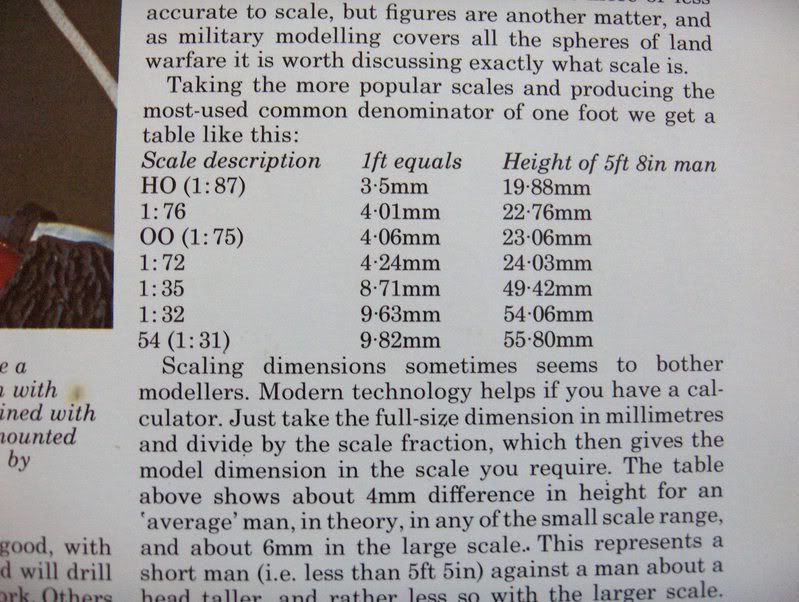What is a 54MM figure? I had 2 e-mails about an earlier thread I posted on John Jenkins page where I "guessed" what the MM rating really meant. It was suggested that I post here on the K&C page with a simpler explanation.
1/29 = 63.06207 MM
1/30 = 60.96 MM
1/32 = 57.15 MM
1/35 = 52.2514 MM
1/64 = 28.5750 MM (railroad, not the soldiers)
An exact 54 MM = 1/33.86667
To get the MM value, you calculate what a six-foot interval would be in the desired scale and then measure that interval in millimeters. So for 1/30 scale, a six-foot interval would be 2.4 inches (math = (12 inches/foot*6 feet)/(30) = (72)/30 ). Then convert that value to millimeters, so 2.4 inches = 60.96 millimeters (2.4 inches * 25.4 millimeters/inch = 2.4*25.4). Remember 1 inch - 25.4 millimeters. Again, the standard being measured is always 6-foot.
The caution here is that everything from 1/29 thru 1/35 has been advertized as 54 millimeter in the past.
6-foot Tall Character at Scale in Inches
1/29 2.4828
1/30 2.4
1/32 2.25
1/35 2.0571
1/64 1.125
The true 54 MM (1/33.8667) would be 2.1260 inches tall.
I had the time to check the math this against a 2-meter metric standard as opposed to the 6-foot standard, and it is clearly a 6-foot standard. 2-meter standard regenerates gibberish.
Gotta love scales and hate MM values.
Love my 61 MM soldiers!!!!
1/29 = 63.06207 MM
1/30 = 60.96 MM
1/32 = 57.15 MM
1/35 = 52.2514 MM
1/64 = 28.5750 MM (railroad, not the soldiers)
An exact 54 MM = 1/33.86667
To get the MM value, you calculate what a six-foot interval would be in the desired scale and then measure that interval in millimeters. So for 1/30 scale, a six-foot interval would be 2.4 inches (math = (12 inches/foot*6 feet)/(30) = (72)/30 ). Then convert that value to millimeters, so 2.4 inches = 60.96 millimeters (2.4 inches * 25.4 millimeters/inch = 2.4*25.4). Remember 1 inch - 25.4 millimeters. Again, the standard being measured is always 6-foot.
The caution here is that everything from 1/29 thru 1/35 has been advertized as 54 millimeter in the past.
6-foot Tall Character at Scale in Inches
1/29 2.4828
1/30 2.4
1/32 2.25
1/35 2.0571
1/64 1.125
The true 54 MM (1/33.8667) would be 2.1260 inches tall.
I had the time to check the math this against a 2-meter metric standard as opposed to the 6-foot standard, and it is clearly a 6-foot standard. 2-meter standard regenerates gibberish.
Gotta love scales and hate MM values.
Love my 61 MM soldiers!!!!



